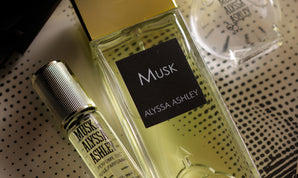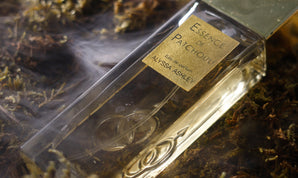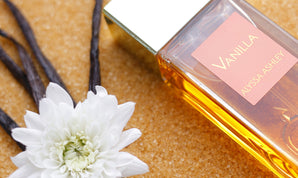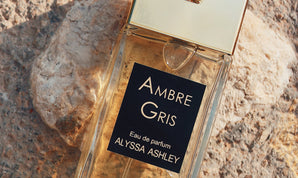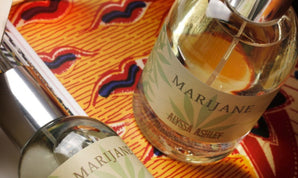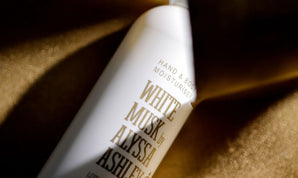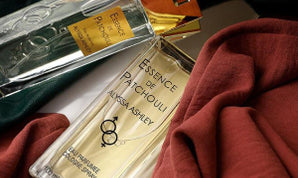When one thinks of winter one imagines a warm and cosy home. A fireplace that adds atmosphere to the room, with the crackling of the flames and the smell of dried fruit coming from the centrepiece in the living room. And due to the scents, between smoked, dry and damp woods, a magical sensation is created. And what about spices? Cumin, cardamom, nutmeg, they all dress up a perfume.
I will try to explore some woods and spices that we should be considering, in terms of their olfactory profile and character, that are suitable for this season for cuddling on the sofa and under the covers.
Woody fragrances :
Sandalwood
Sandalwood perfume exudes warm and slightly creamy notes. I personally prefer Co2 extraction because it has an aroma which is more faithful to the wood than the material obtained by steam distillation. It ranks among the base notes and is a remarkable fixative. The most famous and expensive is the one from Mysore, where the production of the oil is scrupulously supervised by the Mysore government.
Ginger and Turmeric from Alyssa Ashley's Biolab range contains sandalwood and is suitable for all. It is a natural product and has no SLES, SLS or parabens in it.
Cedarwood of Lebanon
this material has a balsamic and lactic character, its drydown is slightly liqueur-like. It gives volume and warmth to woody accords. Combined with fragrances with distinctive masculine characteristics, it gives it elegance and depth.
A warm example of a cedarwood note can be found in Alyssa Ashley's Amber Gris fragrance, which accompanies and cradles, like a wave in the ocean, ambergris, a raw material of animal origin. We talked about Amber Gris in a previous article.
Guaiac wood
Extracted through a steam distillation process from the bark, is a material with a sweet olfactory profile, reminiscent of benzoin. It is an essential ingredient for composing leathery and smoky accords.
Vetiver
at least its name is known by all, an indispensable element of the traditional Fougère. It is considered a wood because the extraction of raw material takes place from its root. It has a different olfactory profile and quality depending on where it comes from: China, Haiti, Indonesia, Reunion Islands, the production extends as far as Brazil.
Woody notes have been present for a long time, since around 1950, although have never been predominant. However, in almost all compositions, woody facets, both natural and synthetic are present.
Spicy fragrances:
Cinnamon fragrance
has pungent, fruity and spicy notes, at times reminiscent of clove oil. The raw material for perfumery is obtained by steam extraction and carbon dioxide. How can you tell a cinnamon from a cassia (Chinese cinnamon)? The flavour is different, Cassia contains twice as much essential oil (the predominant molecule is Coumarin). This makes its aroma more intense and impactful, perhaps less complex than its more valuable botanical relative. The form is also different, Cassia rolls up on a single sheet/bark, while cinnamon is a collection of peels, masterfully assembled and cut. Cinnamon, along with ginger, are recognised as Christmas spices.
What a pleasure to be overwhelmed by the top notes of Tonka Musk by Alyssa Ashley. Cinnamon, used to enrich the taste of the noblest foods, shows all its character in this perfume. A charm that always stands out beyond any trend.
Juniper
It is a plant from which the branches and twigs are dry distilled, but it is the berries, i.e. the spice, that gives perfumery surprising emotions and a fairytale charm. They come from different countries, from Albania, for example. Production in Grasse is of the highest quality. The raw material, soluble in alcohol, is deep green, a wonderful colour. The absolute is warm and comfortable with juicy undertones. There is a gourmand and amber facet that contrasts with a freshness that never lets up. The CO2 extraction, on the other hand, reveals something more, a fruity and musical, thirst-quenching side. The essential oil, on the other hand, has a terpene component, which is a little annoying to my nose.
In conclusion, we can say that the beauty of a certain type of 'winter' raw material is dynamic. Through smoky, woody and liqueur notes, we can remember holidays that are over and perhaps plan new ones. In fact they are fundamental materials for giving modernity to colonies and above all for creating tropical accords.
